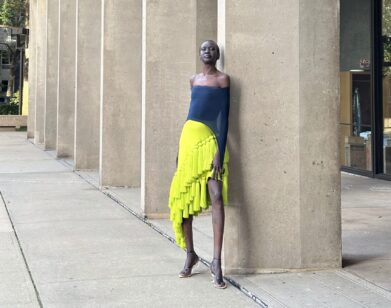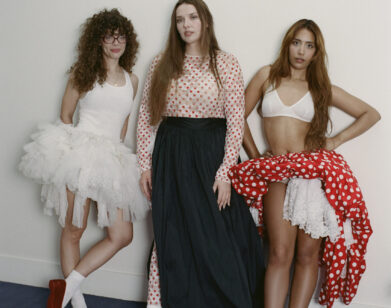Ten memorable moments from the history of cult magazine The Face
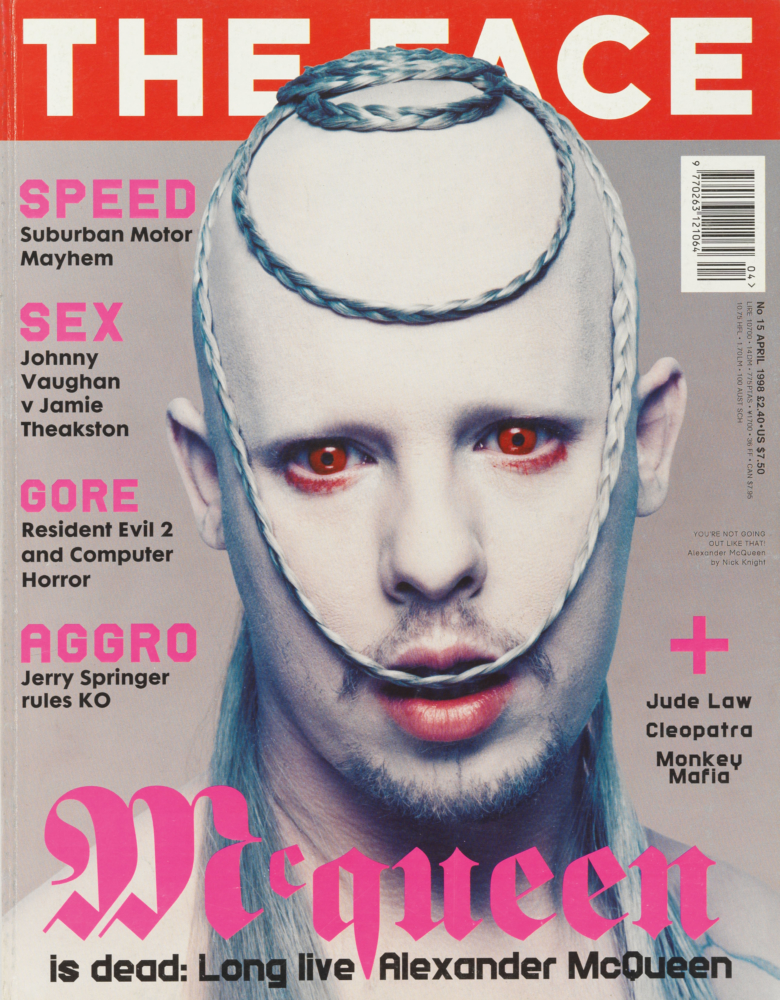
ALL IMAGES COURTESY OF NICK LOGAN/THE FACE ARCHIVE.
You’ve likely seen the images of Kate Moss, bounding across the sand in the buff in one, her face scrunched up and beaming out from underneath a headdress in another. Shot by photographer Corinne Day, Moss was then 15 years old, a working class girl from Croydon. These images first appeared in British culture magazine The Face, hitting newsstands at a time when national morale was hankering for a much needed boost, and a porcelain-faced ingénue was just the thing to turn the tides on Britain’s collective mood.
The Face—founded by Nick Logan after a successful run at pop music magazine Smash Hits—rewrote all the rules, riding the wave of counterculture to a loyal international following of people hungry for the next big thing in art, fashion, music and beyond. And month after month, The Face delivered a buffet. What came through its glossy pages was more than discomfiting underground culture to challenge the status quo—it was a playground for budding photographers like Corinne Day, Juergen Teller, Nick Knight and Ewen Spencer.
In his new book The Story of The Face: The Magazine That Changed Culture, author Paul Gorman gives an exhaustive and exacting account of how The Face split pop culture open at its seams with stories and visuals that are still imitated today. While it would have been easy to eulogize such a groundbreaking publication with a fawning tribute—after all, it’s lionized in fashion circles ad nauseam—Gorman broke down its legacy piece by piece. Here are 10 of The Face’s most memorable moments.
MAY 1980, THE FIRST ISSUE
PAUL GORMAN: That issue is very important in the story of The Face, not only because it’s the first but also because there were several markers that were put down in that issue which were consistent throughout the magazine’s history.
For the cover subject [founder] Nick Logan chose Two Tone, which was a post-punk movement. Groups such as The Specials, Madness, Selecter … it was multi-racial, based on ska and reggae of the ’60s and ’70s and looked great. People wore mohair suits, pork pie hats, loafers and white socks with checkerboard ties and slim shades.
In that issue there is a great feature, really the first time that a music-based magazine had gone to one of the shops that sold the clothes that the pop stars wore, on and offstage. This was Johnson’s on King’s Road. So The Face was talking about the look of music. So you have this notion in that first issue that this magazine is not just about music, but the culture that surrounds it as well.
JULY 1981, ADAM ANT AND THE SELLING OF BLITZ CULTURE
GORMAN: This idea of the selling of Blitz culture came about because a bunch of London art students, writers, photographers and club runners came to New York to showcase fashions they were selling to their markets and little stores in London. Among them there was Sade, who was a designer at that stage and was modeling, Spandau Ballet, and a lot of writers, including Robert Elms, who championed the movement.
Women’s Wear Daily and the Village Voice picked up on it, and planted the seeds for what would happen with the second British Invasion in ‘84 or ’85, out of which came Culture Club, Boy George, Duran Duran, Sade, Spandau Ballet—that kind of Pretty in Pink music. That big moment where British bands started to sell a lot in America again, you can trace back to that visit.
It’s an interesting moment in The Face because Logan was always international in his outlook, so he didn’t just want it to be about London or Britain, and this is an indication of it.
MARCH 1985, HARD
GORMAN: Ray Petri headed this fashion styling and photography collective called Buffalo, which was tough but very sensual. The kid on the front [cover of the issue] is 13 years old, Felix Howard, and he l went on to dance in Madonna’s video for “Open Your Heart.” She loved Buffalo. In fact, if you look at Madonna in 1984, 1985, she’s taking a lot from that Buffalo look and making it her own as the genius she is.
Buffalo came from that West London scene at that time, and was multicultural as well. Ray was gay, sadly died of AIDS in 1989. Neneh Cherry was a member of it. They produced these very groovy, hard edge photo-shoots. Madonna co-wrote and produced a single for Buffalo model Nick Kamen, which became a minor hit here, “Each Time You Break My Heart”. That shows how interested she was in that whole thing.
SEPTEMBER 1986, CHICAGO HOUSE
GORMAN: Sheryl Garratt was a contributor at that point, having come out of the clubs and loved dance music. This was very early in the development of house, before house took over the world, particularly in England. There was a compilation album released, so she went to Chicago to write it up on the press junket and spent most of the day in hotel rooms interviewing the various contributors and really felt she wasn’t getting the goods. So she met Frankie Knuckles alone at midnight; he picked her up in the car and took her around the places where house music was incubated, so she was right there at the frontline. She then brought that back here and to read that in The Face, of this genre that was really going to take over, was very exciting. It’s a great example of how The Face was prepared to go the extra mile in journalism.
NOVEMBER 1989, THE WE GENERATION
GORMAN: The Face had run into a bit of difficulty in terms of perception in the U.K. because people started to think of it as an elitist, Soho-based operation run by a bunch of cool cats who were only interested in eating and clubbing at the latest places and just hanging out with each other.
Sheryl [Garratt] realized what was happening in England was the opening up on youth culture, and we can put it down in a way to house. It was a great democratizing thing where you didn’t have to go to the hip store in Soho to get your suits, you can wear great Kangol hats or you can really break out of those tight modes of dress and expression. It was really about provincial pride in places like Manchester and Bristol. It was all about hugs in fields rather than sneers behind the velvet rope.
Garratt said that it was the revenge of the suburbs going, “Fuck this, we don’t want to be too cool for school. We don’t want to be out-hipping each other all the time, we just want to have a good time.”
JULY 1990, THE THIRD SUMMER OF LOVE
GORMAN: Kate Moss had also appeared on the cover of the May 1990 issue, which was dedicated to the World Cup that year. Art director Phil Bicker seen photographs of her earlier that year and said, “This is the face of The Face. This is where we’re going in 1990.” So the late photographer Corinne Day, stylist Melanie Ward and Moss went off to the south coast of England and came back with this shoot, in which she is wearing a headdress.
She almost wasn’t on the cover. They mocked up a cover of Sandra Bernhard, because she was featured in that issue, but then realized she didn’t express what that issue was about: Britain and positivity. Then Bicker and Logan toyed with the images from the Corinne Day shoot and talked it through with Garratt and came up with this genius cover. It’s kind of a rough crop of the headdress against the magazine masthead, so looks a bit handmade which adds to the charm.
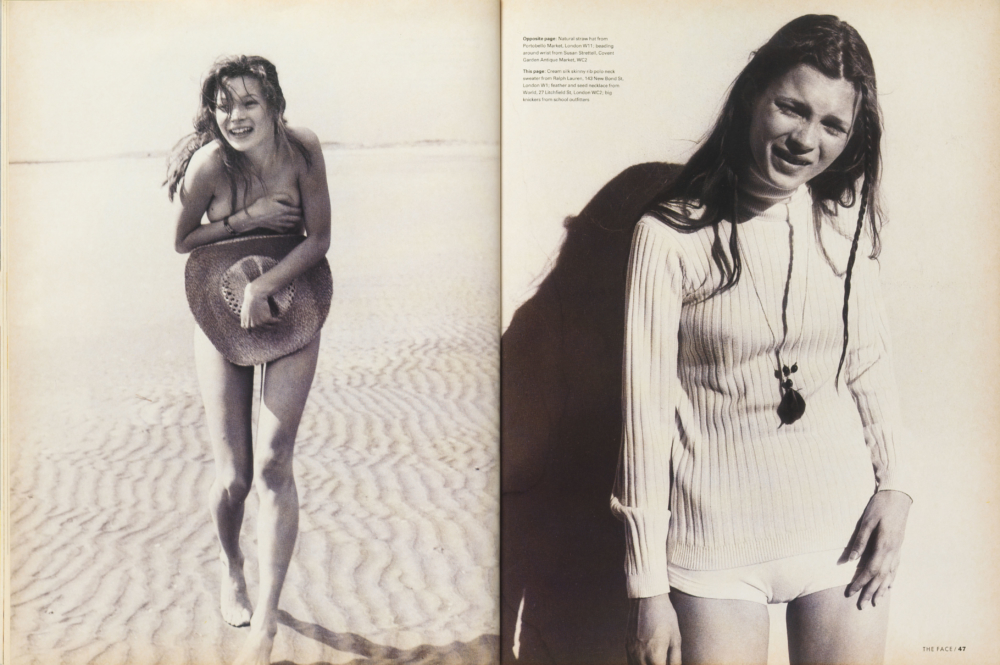
MAY 1992, LOVE SEES NO COLOUR
GORMAN: “Love Sees No Colour” came from a slogan used in the rehabilitation of L.A. gangs. Sheryl Garrett had seen a documentary where it was mentioned. In Europe we had the rise of the right-wing , particularly in Italy—young kids who were Nazis. This issue was a call to arms; they sent this commission,“Love Sees No Colour,” to tons of people: photographers, pop stars, artists, designers. David Bowie and Iman sent back an anti-racist statement, Gilbert & George came up with an artwork, and Boy George is on the cover with a bindi on his forehead head holding two babies in this hip, funny pose.
There’s the slogan underneath, “Fight Back” was tied up with a response not only to what was going on around the world but also to the magazine’s particular circumstances. This issue was published just after the handing down of a jury verdict in a libel case brought by the pop singer Jason Donovan against The Face, which had published a photo of an outing campaign poster of him wearing an adapted T-shirt that said “Queer as Fuck.” They were found to be guilty of implying to their readers that Jason Donovan was gay, when in fact he wasn’t.
This verdict resulted in damages and costs of £200,000 against The Face. Since this was an independent operation, it really threatened the magazine’s existence and caused a great public outpouring of support. A fund was set up with celebrities and the public sending funds to ensure the magazine’s survival. Nightclubs used to give them all their change on Monday mornings after the weekends, coming in with with bags of hundreds of pounds in coins. This ensured The Face’s longevity. It also spoke to the affection the people in Britain felt for The Face.
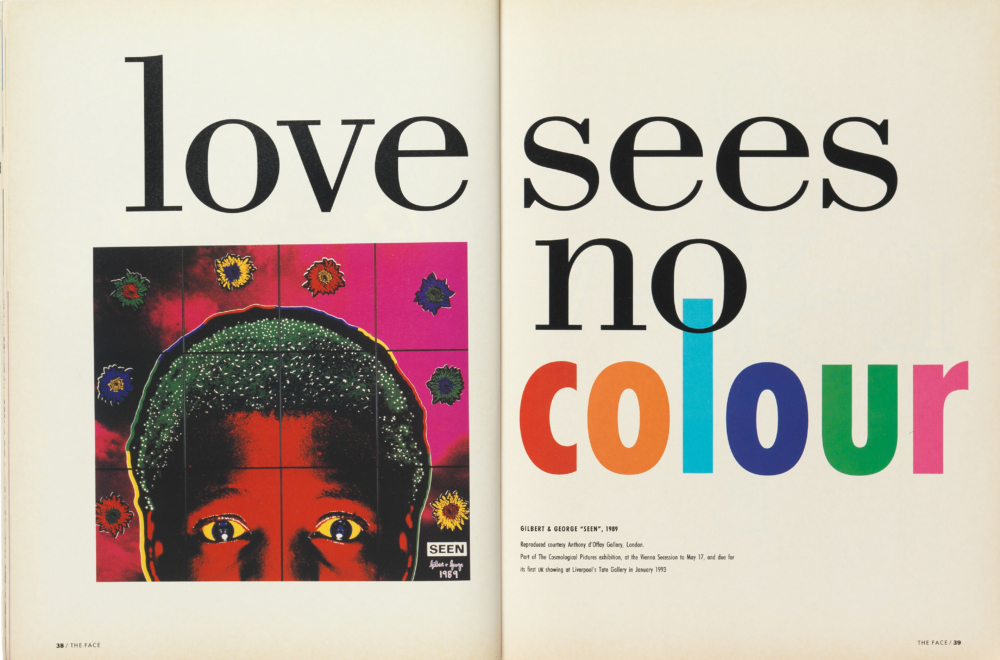
SEPTEMBER 1983, NIRVANA: IN THE COURT OF KING KURT
GORMAN: This was published eight months before [Kurt Cobain] died. He gave quite a few interviews that autumn, but this is a very interesting one. Amy Raphael, who wrote it, had been championing grunge since the late ’80s and so she went to New York with [photographer] David Sims, who produced animal onesies for the band to wear while Kurt chose a thrift store floral frock for the cover. The interview is quite revealing; Cobain was feeling the pressures of fame enormously and poured his heart out to Raphael. So it’s kind of a unique Face package untrammeled by publicists, managers—there was nobody getting in the way saying, “Don’t say that” or “Kurt’s not feeling well, so he doesn’t want to talk.” It was a very open exchange.
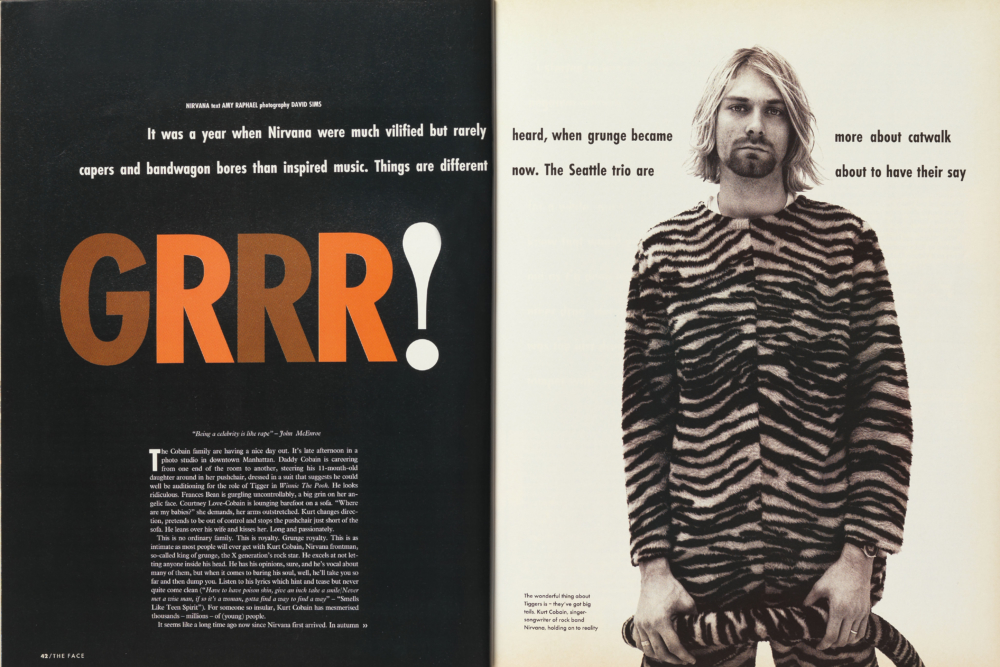
MAY 1995, 15TH ANNIVERSARY ISSUE
GORMAN: Logan always liked to give the readers something extra, so for the 15th anniversary they set up shoots with supermodels, six of them, across four variants. This was really the height of The Face in terms of commercial appeal; this is the second biggest-selling issue. It still only sold 128,000 copies, but the theory was that those 128,000 people were quite important in their own way. That issue is interesting because those supermodels are evidently enjoying themselves—it’s not about fashion and it’s not really about commerciality, it’s about celebration.
APRIL 1998, MCQUEEN IS DEAD: LONG LIVE ALEXANDER MCQUEEN
GORMAN: [This issue] is kind of prescient isn’t it? The interview by Ashley Heath is a bit cheeky, and I think he says something to him like, “Are you going to give up the gay clubbing scene?” [laughs] Heath had known McQueen since the early ’90s. The great Nick Knight photographs show how uncompromising McQueen was. A really extraordinary person who could only be from London, while Knight had been working with The Face for a very long time. His work was first featured in issue eight, back in 1980. The McQueen cover was published was a year before Logan sold the magazine, so for me it’s a great example of late-period The Face.
THE STORY OF THE FACE: THE MAGAZINE THAT CHANGED CULTURE (THAMES & HUDSON) IS AVAILABLE NOW.

